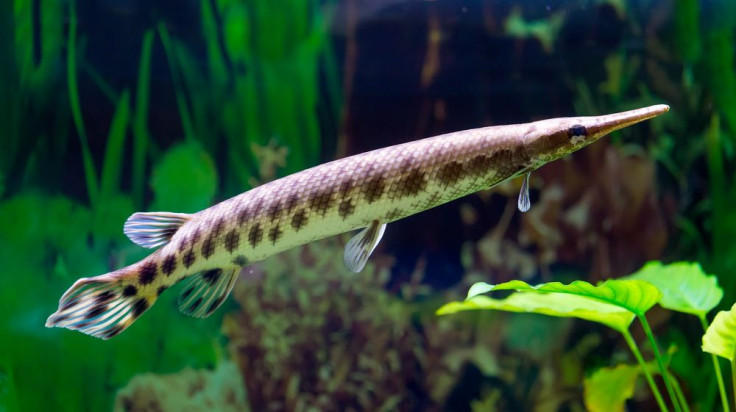Evolutionary Find: DNA Finally Shows Link Between Fish Fins And Human Hands And Feet

Fins and hands look so similar that anthropologists knew one must have led to the other. Only problem was they couldn’t exactly prove this, until now that is. In a noteworthy study for evolutionary biology, researchers have discovered the genetic machinery for our hands and feet in an unlikely species: the North American spotted gar.
Fossils show that the pectoral fins on the side of the fish evolved into limbs and enabled the creatures to crawl out from the sea and begin life on land. However, according to a recent press release, the autopods, that is, the wrists and fingers and the ankles and toes, have no known counterpart in the fins of living fish.
"Fossils show that the wrist and digits clearly have an aquatic origin," said Dr. Neil Shubin, the Robert R. Bensley Professor of organismal biology and anatomy at the University of Chicago and a leader of the team, in the press release. "But fins and limbs have different purposes. They have evolved in different directions since they diverged. We wanted to explore and better understand their connections by adding genetic and molecular data to what we already know from the fossil record."
This leaves a blank space in the timeline from fish to mammal, something which has long puzzled scientists with what could have been this missing link. Past attempts to find this link proved unsuccessful because both the look and the DNA of the fish fins failed to match that of mammalian autopods.
It turns out that scientists had been looking for this link in all the wrong places. It was found in the spotted gar, an interesting primitive dish with long cylindrical bodies and elongated mouths found across the North American continent. The genome for the gar had recently been sequenced and in doing so the rudimentary genetic machinery for the fish counterpart of mammalian wrists and ankles was discovered.
This is truly a landmark finding for evolutionary science and gives a clear and definitive answer for something that scientists had before only been able to speculate. According to the press release, the team was able to find the autopod traces in the spotted gar through a complex process of genetic profiling.
"Overall," the researchers concluded, "our results provide regulatory support for an ancient origin of the 'late' phase of Hox expression [a type of gene]that is responsible for building the autopod."
Source: Shubin NH, Gehrke AR, Schneier I, et al. Deep conservation of wrist and digit enhancers in fish. PNAS. 2014.



























